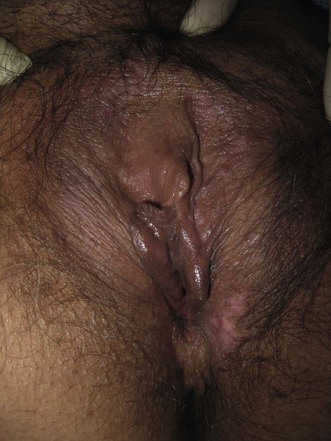Pruritus vulvae describes a symptom that may be both psychologically distressing and socially embarrassing. An underlying etiology should be sought by obtaining a thorough history and performing a mucocutaneous physical examination. Secondary pruritus vulvae may be caused by infections, dermatoses, systemic diseases, and malignant or premalignant lesions (Box 200.1). Appropriate treatment should be instituted. The mainstay of treatment of pruritus vulvae is to identify and remove all suspected local irritants and allergens (Boxes 200.2 and 200.3). The patient should be instructed to discontinue all local products, including soaps, personal hygiene products, sanitary pads, medications (complementary/alternative, non-prescription, and prescription), and occlusive/synthetic clothing. The patient should bathe with lukewarm (not hot) water, pat (not rub) dry, wipe from front to back, change underpants daily, and launder clothing using a double rinse cycle. The patient may resist these measures, as they may believe in the need to have a ‘clean’ vulva and that natural secretions and odors are offensive or the cause of their symptoms. The patient may develop elaborate hygiene regimens that contribute to local irritation and contact sensitivity and may confound or be the primary cause of persistent pruritus. Toilet (tissue) paper and commercial wipes may contribute to local irritation. Furthermore, both may contain allergens such as formaldehyde, benzalkonium chloride, and fragrance that could contribute to persistent pruritus. Urine, stool, sweat, and cervical or vaginal secretions may contribute to local irritation. Urinary incontinence and contact with stool should be addressed. Cotton washcloths, cool Sitz baths and use of fragrance-free feminine hygiene products should be advocated.
Pruritus vulvae

Management strategy
![]()
![]()


















